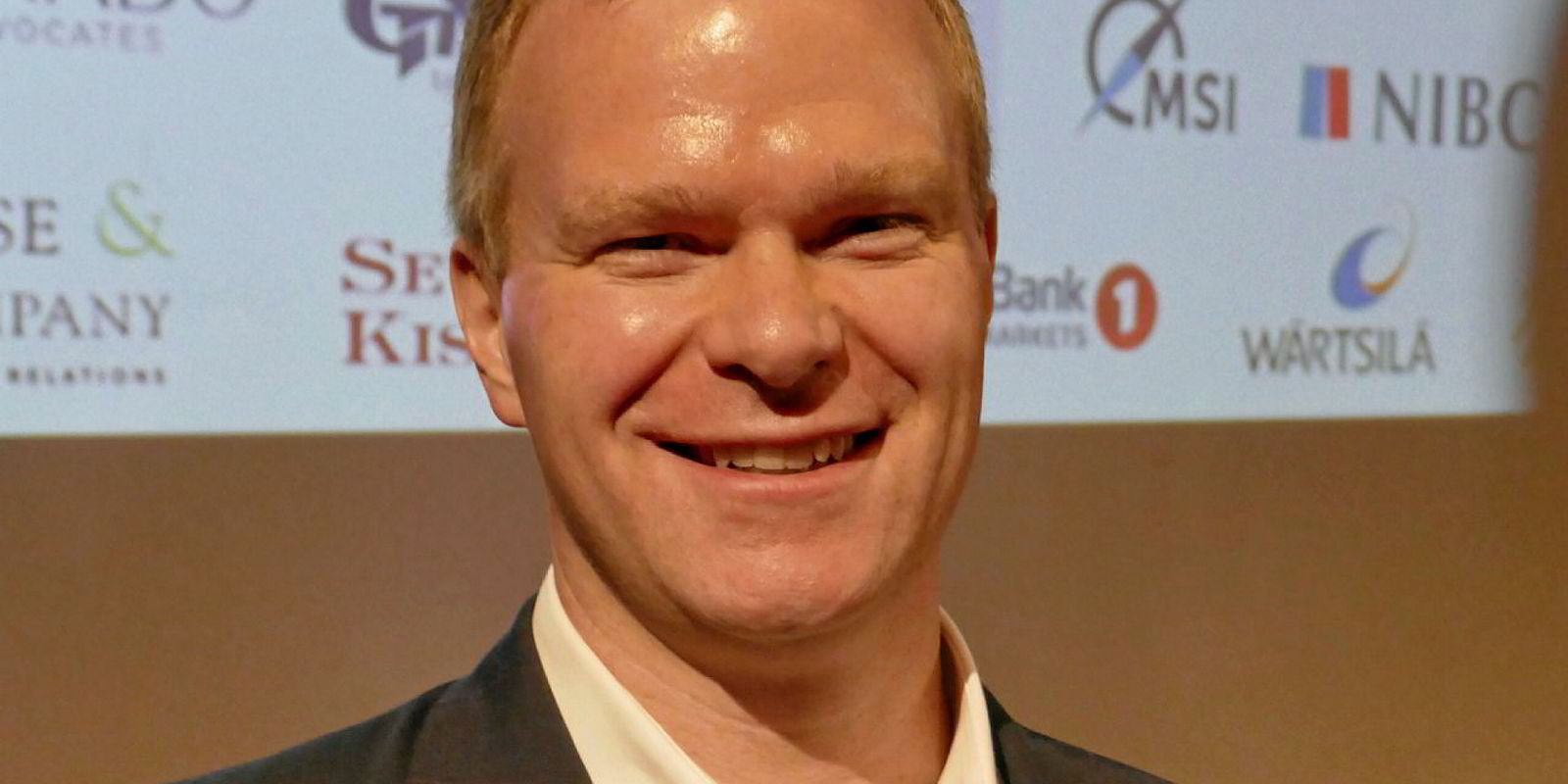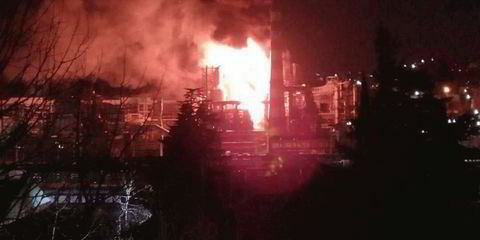Offshore support vessels (OSV) have probably found the bottom of the crisis but earnings could be stuck in the depths for years before utilisation and day rates return to meaningful levels.
The shape and pace of a recovery was one of several issues explored last week at Marine Money’s 19th annual Ship & Offshore Finance Forum in Oslo.
Erik Tonne, head of offshore research at Clarksons Platou Securities, led the OSV panel discussion. Joining in were Bech Offshore chief executive Christian Berg, DVB Bank global head of offshore Geir Sjurseth, Standard Drilling chairman Martin Nes and Seacor Marine Holdings chief executive John Gellert.
Nes said: "My view is that it will take another two to three years before we see a more normal market. I think we are scratching the bottom but I think it is going to be a bumpy road ahead for the next year or next two years, before we see the market slowly increasing again."
Some evidence in the market has shown that the number of financial investment decisions (FIDs) have been picking up recently but the offshore sector is suffering badly. Slightly more than 1,600 OSVs are now in layup globally, which is more than 30% of the world fleet, according to data from Tonne.
OSV term rates are right at or fairly close to operational expenses (opex), while Clarkons Platou Securities views utilisation as rebalancing by about 2020, as long as significant numbers of vessels are taken out of the market.
On the positive side, DNB senior oil analyst Torbjorn Kjus, speaking at the same Marine Money event, predicted Brent at $70 per barrel by the fourth quarter of this year, which would be up from this week’s price of around $49.
Sjurseth says oil at $70 per barrel, if true, or even at $60 per barrel, would probably tip the scales radically for OSVs.
“For our outlook for the market, clearly, nothing of what we have done so far, and I think I can speak for DVB and other banks, has been based on $70 at the end of this year. If that is the outcome, I think we should go outside and have a beer,” said Sjurseth.
Otherwise, the DVB banker believes “the worst is behind” the market, which he says is working to correct itself. For three key factors, he underscores the competition from onshore shale oil to grab offshore’s share of exploration-and-production (E&P) spending, far too much vessel capacity and still too much debt for most owners, despite all the restructurings.
“If you look at all the E&P spending going into the market, I think 2017 is a turning year for E&P but a larger fraction of the overall spending now goes to onshore, as opposed to earlier. Those decisions are being taken now as we speak and they cannot be reversed for the next three or four years,” said Sjurseth.
Regardless of when the recovery comes, Sjurseth says there are too many vessels in the market. "A big chunk of this needs to be permanently removed and whether the market picks up tomorrow or not, they still have to be removed one way or the other. There is a lot of speculation and a lot of uncertainty about what is going to happen," he said.
Sjurseth also commented that Gellert’s new Seacor Marine Holdings, which was spun off as a pure-play OSV owner from its Seacor parent just last week, could turn out to be well timed.
Gellert stresses that it is fairly difficult to predict the actual pace of recovery when it does begin.
With oil companies shifting capital to shale, he points to onshore activity as being more flexible than offshore, meaning the decision channel is also quicker from investment to production and then to cash flow for clients.
“Offshore has a lot longer cycle. Even though I think the fundamentals are improving, it will take a long while for things to improve in a meaningful way, to work through the backlog of vessels and the backlog of orderbook that is out there,” said Gellert, who is expecting a possible "seesaw" recovery.
“I don’t know how long it will be but I think it is a slower cycle. It is a long decision process [at oil companies] and I think you’ve got to wait for that to play out,” he said.
Berg, who spent about 15 years on the OSV ownership side, just launched Bech Offshore as one of the market’s first independent commercial managers. It has an eye to handling repossessed ships for banks or stacked ships for owners.
Berg believes there is a chance for an unexpected spike in the market at the end of 2018 but such a rise might be more towards further sustainable rates rather than pre-crash highs.
“I don’t see any good day rates for 2017 and way into 2018, but I think the market could suddenly change in 2018 for the better because the number of laid-up vessels can also be a bottleneck,” said Berg.
“The cost of taking out those vessels is relatively high because they have been so long in layup now. Many of them will need a five-year class and this is money that many of the owners don’t have, so the vessels currently trading the market will pick up the contracts first and that will increase the rate levels. And they will have to be relatively high rates before we see more vessels coming out of layup.”
Berg says expectations for a prolonged downturn persist. He compares this with “the good times”, when many people could not foresee such a crisis as has hit the sector now, meaning expectations for an upturn have probably been dulled now. Berg also says many vessels will probably change owners on the way out of layup.




